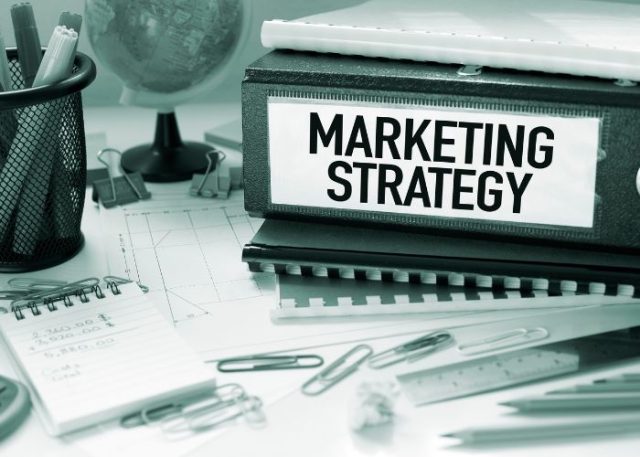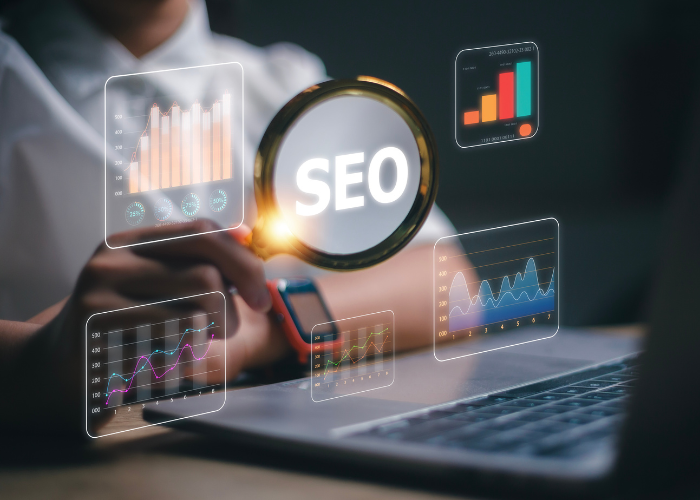The importance of tourism marketing and the planning process are very important issues for the success of tourism businesses in our country. Many companies are active in this sector, but few really know how to grow professionally and stay competitive.
First, tourism marketing helps businesses promote their tourism products and services to people who want to travel. When people know what there is to see and do in our country, then they are more likely to choose to visit that destination.
Secondly, planning is like the plan to reach our goals. It helps to think carefully about how to promote tourism, what actions we need to take and how we will go about it. If we don't have a good plan, we might get lost on the way.
Both of these together help tourism businesses to be successful. They help tourists find our country attractive, and help businesses attract more customers and grow.
In this article, we will examine the tourism marketing planning and programming process, offering advice on achieving your goals.
Step 1: Understand Your Business Purpose and Objective
The purpose of a business is a brief description that explains why that business exists. Basically, answers the question “Why this business exists;”. It is not only limited to profit and money, but it explains how the business contributes to society and the market. It is the reason the business exists beyond profit, expressing important values and beliefs that determine the direction of the business.
The target are the big goals that a business sets out to achieve. They include concepts such as development, sustainability and profits. They are goals that are more abstract and are about how the business wishes to move forward. These goals determine the general course and direction of the company towards the future.
Their benefits are as follows
- Where do you want to get to?: They determine the direction and orientation of the business. They help staff understand where the company is headed and what its purpose is.
- They create strong teams: Mission statements and overarching goals can inspire staff and create a sense of unity. When staff understand the purpose of the business, is more likely to actively participate in achieving goals.
- Those around you realize who you are: They can serve as means of communication to the public, the customers, investors and other external bodies. This creates trust and transparency.
- They facilitate planning: Thus they will form the basis for the strategic planning of the business. They help make decisions about how to achieve these goals.
Generally, the purpose and objectives constitute the “lighthouse” for a business, defining the path to the future and how the business wants to achieve its mission.
In which areas of the business will they help you?
- They help staff understand why they work there and what the business is trying to achieve.
- They can inspire employees and make them feel like part of a team.
- They help explain to other people, such as customers and investors, what the business does and why it is important.
- They lay the foundations for planning the future of the business, helping to make decisions about how to achieve these goals.
Consider the rules mentioned, as the “travel map” of a business. They help the business know where it is going and what path it needs to take to get there. They are like guides who show you the right way when traveling to an unknown destination.
If you imagine that business is a journey, the purpose is like the destination you want to reach. It tells you why you started the journey and what is important to achieve during it. Goals are like directions that tell you how to get there. They help you understand what the important milestones are and how to achieve them.
In total, these rules help you maintain direction and organization in your business, such as the directions you take when traveling to reach your destination.

Step 2: What goals should you set?
In this step, you need to set clear and achievable goals for your business. These goals guide you and help you direct your efforts towards achieving them. Let's look at them in more detail:
- Financial Goals: These goals are related to money and the financial results of your business. They may include increasing revenue, the reduction of operating expenses, increasing profit, expanding into new markets or increasing market share.
- Which Audience Are You Addressing?: This is where you need to determine which customers you want to reach and serve. This may mean recognizing specific communities, geographical areas, or categories of consumers that are of interest to your business.
- Which Strategy Will You Follow?: You need to think about how you will promote your business and your products or services. This includes the use of advertisements, the creation of web pages, the use of social media, and other marketing tactics to reach your audience.
- Where the competition is moving: You need to think about how you will stand out from your competitors. This may mean providing unique products or services, improving quality, competitive pricing, or enhancing customer service.
Analyzing and defining these goals, you will have a clear picture of what you want to achieve and how you will achieve it. These goals are the “compass” that will guide you into the world of entrepreneurship.

Step 3: Analysis inside and outside the business and what that means
It allows the business to understand the opportunities and threats it faces in the external environment and the capabilities and weaknesses it has internally. Let us examine these two analyzes further:
In this step, we do an analysis of the business environment, that is, we look at the world around her and the things that happen within the business.
- Analysis of Non-Business Sectors: In this place, we look at what is happening outside the business, such as laws and regulations affecting it, the economic conditions (whether the economy is good or bad), competition from other businesses and market trends. This helps us see where there may be opportunities for the business and where there may be threats.
- Analysis of the Sectors Within a Business: In this place, we look at the business from the inside. We are exploring its potential, like the advantages it has (such as specialized personnel) and its weaknesses (such as lack of resources). This helps us understand where we can improve the business and where we may need to pay more attention.
summarizing, this step is critical to the success of your business. Analyzing the external and internal environment, you can understand where you are, where you want to go and how to get there. You realize the opportunities for growth and the potential threats you have to face. also, you recognize the strengths and weaknesses of your business.
This understanding allows you to set clear goals for your business and develop strategies to achieve them. In addition, helps maintain your competitive edge and build a strong market presence.
Having a clear strategy and goals helps you direct your efforts towards success and prepare for the future. This is critical to the competitiveness and long-term growth of your business. Continue to evolve and adapt to the changing world of entrepreneurship to achieve your goals.
Step 4: How to satisfy your customers
With the right combination of these pillars helps to develop an effective marketing strategy. Which can lead to the achievement of business goals and the satisfaction of customer needs. write me again step by step the above text in very simple words. the audience I am addressing is not aware of difficult concepts.
- Product: This is the thing or service you offer your customers. For example, if you are a clothing store, clothes are your product. It is important to understand the needs of your customers and try to offer products that satisfy them.
- Price: This is how much you date for your product or service. You have to consider the cost of production, the profit you want to make and what your customers are willing to pay. Getting your price right can affect your competitiveness.
- Locus: This is about where and how your customers can find and buy your products. If you are a physical store, this includes the location of the store. If you are an online store, what is your website. It is important to make your products accessible to customers.
- Promotion: This is about how you tell people about your products and convince them to buy them. May include advertisements on television, on the radio, on the Internet, but also the way you react to your customers' messages on social media.
At the end of the day, these four pillars help you understand how to offer your products or services to your customers, make them affordable, find them easily and communicate them with the world. Understanding these pillars, you can create an effective marketing strategy.

Bonus for making your design work
It is important to look at the results and progress of our tourism marketing planning. This is to ensure that we do our job well and that we reach our goals. Let's see how this is done in simple words:
What will be the evaluation criteria for our design?
We need to decide how we will measure if we are doing a good job. For example, if one of our goals is to increase sales, then that will be one of our criteria. When we talk about “evaluation criterias,” we mean specific indicators or parameters that we use to judge the performance of a project, of a business or a strategy. So, if one of your goals is to increase sales, then this is one of the evaluation criteria.
We collect information in the interim
We need to gather information about how our design is going. For example, we can see how many people respond to our ads. The next stage is data collection, which consists of gathering information to understand how our design is progressing. This is important in order to be able to assess whether the evaluation criteria we have defined correspond to reality.
We evaluate the results
Based on the criteria we set, we evaluate whether we are achieving our goals. For example, if we see an increase in sales, this is a good result. If one of the evaluation criteria is the increase in sales, then we proceed to evaluate the results. If we find that sales have increased compared to the previous period, then this is considered a positive result. On the contrary, whether sales are flat or declining, this can be a signal that we need to review our strategy and correct any problems.
We make corrections and changes
If the results show that we are not doing well, then we have to change something. We may customize our ads, to change the way we promote our products, or set new goals. When we evaluate the results and find that they do not meet our expectations, this is an opportunity for improvement and change. This process shows openness and the pursuit of continuous improvement in the field of tourism marketing. We analyze the results, we look for possible causes that led to the failure, and we look for solutions.
We learn about the future
The evaluation process should help us learn from our mistakes. So, next time we can do better things. The process of evaluating and improving tourism marketing is not only a necessary process, but it is also a valuable opportunity for learning and growth. This step, the “We learn about the Future,” it is key to the continuous development and improvement of our strategy.
In this way, making sure we are heading in the right direction and improving our marketing performance.
Success in this area requires planning, monitoring and adaptation. It's a constant challenge, but with the right strategy and adherence to the basic principles of marketing, you can create a successful business that satisfies your customers and contributes to the development of tourism.
Conclusions for Tourism Marketing
Tourism marketing is a vital area for the success of tourism businesses and the development of tourism in an area. Businesses must follow a continuous and systematic planning process. However, the application of tourism marketing is the way to achieve their goals. In total, tourism marketing is not only a tool for promoting tourist destinations and services. Therefore, a strategic approach that connects businesses with travelers, offering them value and analyzing the conditions for improved tourism experiences.
However, it shouldn't just be a process, but a system that follows specific steps to achieve results. Defining evaluation criteria, collecting data, evaluating results and correcting our course, we ensure that our strategy remains effective and adaptable to changing market needs.
In addition, this process should be an opportunity for learning and growth. Our mistakes should not be viewed negatively, but as opportunities for improvement. Analyzing the lessons learned from the evaluation, we are able to innovate and adapt our strategy to stay competitive and deliver value to travelers.
In total, tourism marketing is complex, but critical to the success of tourism and related businesses. With the right strategy and continuous monitoring and improvement, we can ensure not only the achievement of our goals but also the maintenance of a sustainable and competitive presence in the tourism sector.
If you are struggling to do it yourself and want some help together we can see the needs of your business and its profile. We can help. Do not hesitate to contact us.
Read also:
Real Estate Marketing | The Complete Guide For Property Owners
11 Marketing Ideas For Property Management
Follow us on Facebook, Instagram and Linkedin for more tips about the online presence of your business.









